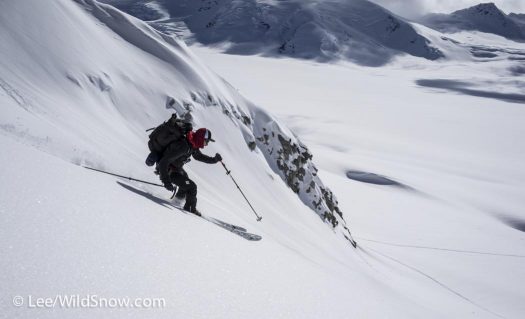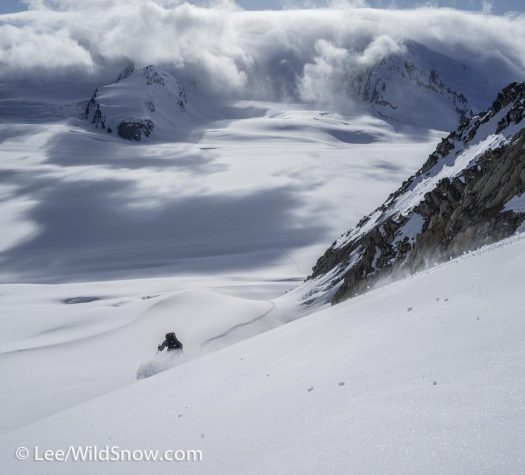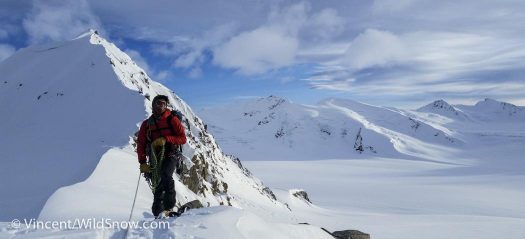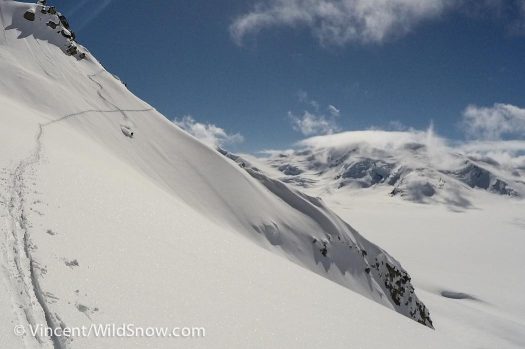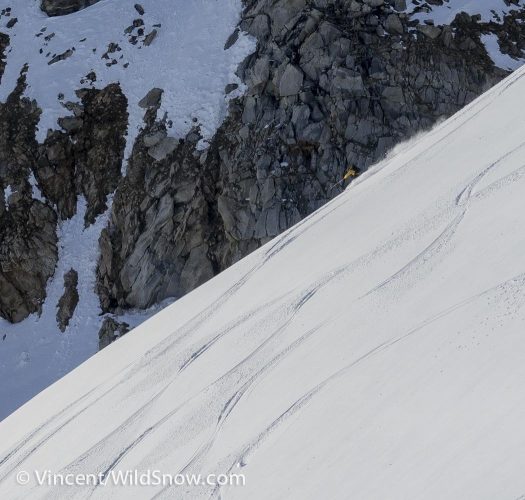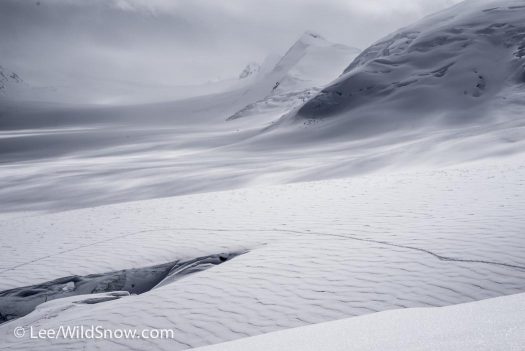Running through Safeway in Fairbanks, Alaska in ski boots (aisle 4, looking for another jar of peanut butter on our way to the airstrip), I knew the trip was a success. We hadn’t left yet, but the adventure was already true. I was headed into a lesser-visited corner of the Alaska Range to go skiing with two friends for the following two weeks.
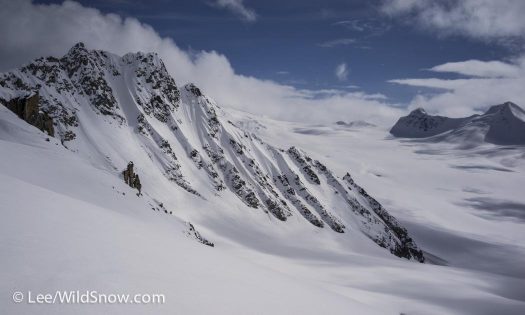
The Eastern Alaska Range is big, remote, cold, windy, and full of lawless summits in the middle of a wilderness designated and dictated not by congress but by its own physical geography.
Now more than ever, guide books, trip reports, route photos, and the webernet of data at our fingertips fosters a culture of tic lists, ‘classic’ lines, and access into the backcountry. Such a matrix of information has opened up the mountains to thousands—myself included—but can also take some small amount of ‘exploration’ out of what backcountry skiing or mountaineering is. Luckily, Alaska.
A couple months ago Vince barged into my kitchen in Leadville, Colorado saying, “Alex, no one knows where this place is!”
“I know, that’s the idea.” I replied.
Vince, Joe, and I flew into a valley of unnamed peaks in the Eastern Alaska Range aiming to find, borrowing a phrase from Melville, a ‘true place’. “It is not down on any map; true places never are.” (I listened to Moby Dick during the trip; Vince read a John McPhee Alaska book and Joe read something about the pandemic that destroys the world).
With no information on skiing available, the three of us took a dive into the chilly waters of the unknown. Our destination is fuzzy on Google Earth, poorly rendered on USGS maps, and lacking any official name.
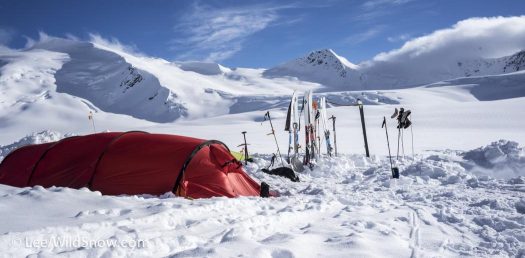
To para(re)phrase Jerry Garcia, ‘in a tent, in a tent, in a tent I will lay my head. Listen to the glacier sing sweet songs and rock my soul…’
Vince is Nick Vincent. Vince and I both work for Paragon Guides in Vail, Colorado. Vince hadn’t been to Alaska before, but I think I can say he is hooked.
Joe is Joe Meyer. Joe and I worked together in Denali National Park and now he runs a custom adventure guiding company in Alaska (Traverse Alaska).
We set up a glacier base camp and spent 11 days skiing, exploring, and eating butter in the heart of one the world’s more frozen realms.
(Safety note: some of the pictures show skiing unroped in glacial terrain. This can be VERY DANGEROUS. We chose to do so in some cases based on years of glacier experience, local conditions, and personal choice. Please do not see this as an endorsement of such practices.)
Big glaciers, unnamed peaks with little recorded visitation, snow, cold, cornices, avalanches, crevasses, and the dragons of Alaskan mountains battled sunshine, pow skiing, northern lights, and the type 1 fun of ski touring.
About three hours after landing visibility went from bluebird to a quarter mile, down 50ft, finally down to 10ft. We were ‘inside the ping pong ball.’ For the whole trip a wall of fuzz would come and go, but the windows of light gave ample opportunity to ski, tour, and mountaineer.
The clouds lifted around 5pm on our second day and we headed out. A mile across the glacier, up a side valley to a high pass. One of the great benefits of the Great White North this time of year is the day length. We skied back to camp into a northern sunset after 10pm; by 1am green and pink northern lights shot out of the sky.
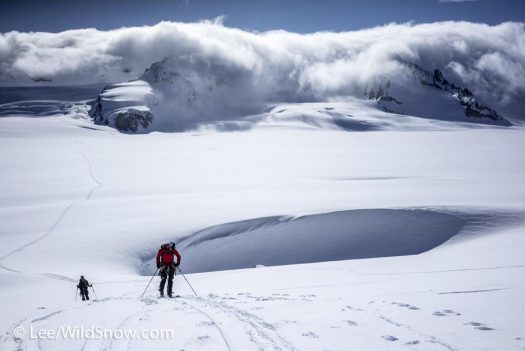
Touring on big glaciers offers an experience into the surreal. Small outcrops turn into giant cliffs; that near corner ends up being miles away.
Much of our skiing took a similar schedule for the next few days, we left with clearing skies mid afternoon and got back between 9pm and midnight.
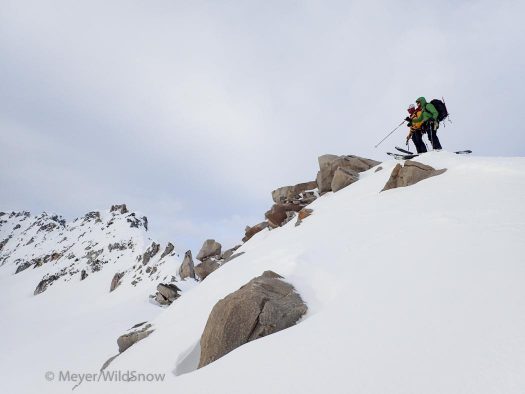
Vince and Alex picking a line from a ridge near camp (Joe took a bunch of great photos that should be up on his gallery soon).
Our first sign of improving weather gave us a chance to enjoy the fruit of waiting out the storm. Pow skiing. Each time we headed for a ‘small’ slope it turned out to be steeper, bigger, further, and far better that it looked from camp.
Exploring a ramp we called the ‘Escalator’ gave us a change to get up high in the valley for the first time. We got to a pass then skied down in a fury as the visibility went to zero. Fifteen minutes later, the clouds passed and blue skies surrounded us. Near the pass for the second time, we turned and booted up a steep face to the ridge of a peak that hung across the valley from camp. Awesome exposed scrambling led to a spectacular summit.
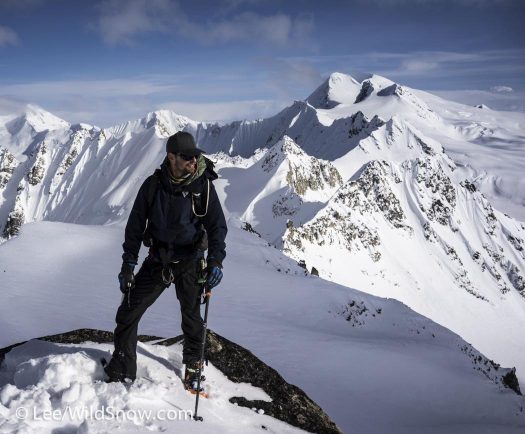
Joe enjoying epic views, soon to be followed by some well earned smoked salmon (if you find yourself in Fairbanks, Interior Alaska Fish Processors is well worth a visit).
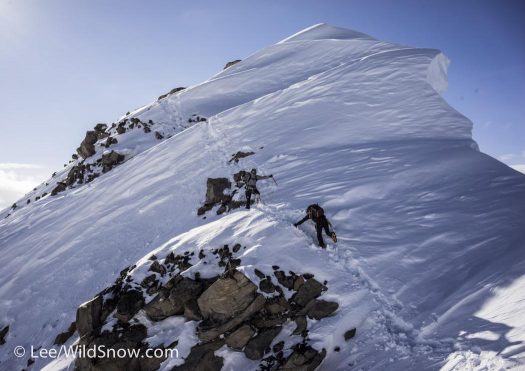
Picking our way across the ridge to an unnamed peak. No record of anyone having been up there before.
Next we headed for a nunataak that we dubbed the ‘Sleepy Dragon,’ then there was the ‘Moat’ and the ‘Bowl;’ powder slowly changing to corn.
Choosing lines was hard to say the least. Landing on acceptable risk in remote places involves a mixture of observation, experience, second-guessing, and precaution (with maybe a hint of luck). “Hard sayin’ not knowing,” was a frequent refrain while spying possibilities from camp.
On the fifth day of the trip we skied over to high point to check out a more north-facing bowl. Arriving at a new vantage up in the valley we looked down on our skin tracks in the valley below. Two days earlier we had toured to a pass at the head of the glacier and the day before we had veered off of this track to a cirque up valley from our vantage. Now looking down at this array something didn’t seem to make sense. It was hard still seeing the track to the pass, but looked as though a strange wiggle seemed to cut the corner from our previous day’s adventure to this older route.
We were alone in the valley save for the ravens (ravens in Alaska will always find you). After much deliberation we decided that this track belonged to a wolverine that was now eating all our food. We ripped skins and sped to defend our camp. No wolverine. The scale of a large glacier plays all sorts of tricks on you. It snowed that afternoon and erased signs for any further investigation.
Joe and I are now confident we were seeing our old track from on add angle at distance. Vince maintains the wolverine was lurking.
A hidden crevasse field, scary wet slides, a wolverine (according to Vince), another peak (maybe, we’re not sure. I’ll come back to this in my next post), a killer camp, and great turns all made for an adventurous week and half of skiing.
I am endlessly grateful for the lessons learned through going where others have already trodden. However, seeking the lithic solace of more ancient times, we put together this most recent adventure in a quadrangle still fussier than most.
You may have noticed that I haven’t actually told you where we were. Such discretion is not oversight, but deliberate. I hope to have shared a bit of our experience of the unknown.
Chasing a dog across a grass airstrip (again in ski boots) for a quarter pound of cheese after landing back in Fairbanks reassured me that plenty of adventure is still out there, just about all around us. Find yours.
Okay, my next post will include a bit more about the skiing we got done, I promise. Here is Eastern Alaska Range Part 2.
(P.S. If anyone needs help finding their adventure, and specifically wants to do some ski touring in the Alaska Range, Alex, Joe, and Vince will be guiding a trip next spring. Get in touch with Joe Meyer for more information.)
Dr. Alex Lee lives in Anchorage, Alaska. Alex is a professor at Alaska Pacific University, teaching philosophy and environmental studies. He also works as a sometimes guide, naturalist, writer, and photographer.

